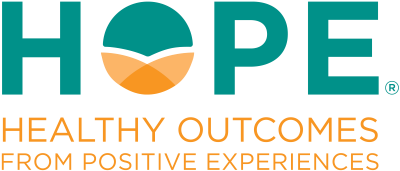
You decided to start using data – now what?
Last month, we talked about how data collection and analysis can be useful (and doable) for any organization, no matter the size. We focused on starting small, staying aligned with your purpose, and identifying first steps to begin.
The next step is one that often gets skipped: figuring out what you actually want to know.
It sounds simple. But in practice, many organizations start collecting data or looking at spreadsheets without a clear question in mind. That can lead to feeling overwhelmed, unsure of what to do next, or worse – going down rabbit holes chasing interesting data points that don’t help you make decisions or drive change. Sometimes, those data points aren’t even tied to things you can impact.
What do we mean by “asking the right question”?
The “right” question is one that’s connected to your goals. It helps you understand something you care about—so that what you learn can lead to action.
Often, what organizations care about is improving a program, increasing impact, or making more informed choices about where to focus their time, energy, and resources. For example:
- If you’re thinking about designing a new youth program: Is this program needed by our youth?
- If you’re seeing low attendance: When are people dropping off, and why?
- If you’re launching something new: What would success look like?
These types of questions help you focus on what matters and keep you from getting lost in the data. (It’s easy to do – there is so much to be curious about!) Clarifying your questions also helps you decide where to focus first. If you’re hoping to act on what you learn – as most organizations are – focus on questions that relate to areas you can influence. That’s where your data becomes not just interesting, but actionable.
Remember, there can be more than one round of data collection and analysis. If your team has a lot it would like to know, start by prioritizing what’s most important now and keep a wish list of other questions for later.
Start with purpose, not numbers
Before you start collecting data, pause and ask:
- Is there a decision we need to make? What is it?
- What are we hoping to understand to make that decision?
- How will this information help us do our work better?
If you can’t answer those questions yet, you’re not ready to dive into the data. And that’s okay! It just means spending a little more time getting clear first. Talk about it with your team. Revisit your goals. Sketch out what success would look like. Use sticky notes or a whiteboard to map out what you’re trying to understand and why it matters. Don’t be afraid to take it slow.
Be selective – less is more
There’s a lot of data out there, and it’s tempting to try to look at everything. But more data doesn’t always mean more clarity. In fact, it can often make things more confusing. Pick one or two key questions to start with. Then identify the few data sources that might help you answer them. It’s okay if it’s not perfect! You don’t need to answer everything right away. You can learn in phases.
Match your question to your data
Once you have a clear question, ask: Where might the answer live? Internal tracking or reports? Feedback from families or staff? Program participation logs? Publicly available data?
You might discover you don’t yet have the data you need. That’s actually a helpful insight, as it tells you what’s missing and whether you need to start tracking something new.
Our journey with implementation evaluation
At the HOPE National Resource Center, we are continuing to make progress in our implementation evaluation work. Thank you so much to everyone who contributed their time, experiences, and expertise to participating in our survey, listening sessions, and one-on-one conversations over the last couple of months. Our collection phase is now complete, and data analysis is underway!
We, too, needed to choose the right questions to center our work.
- We wanted to know what implementation of the HOPE framework looks like, including successes and challenges: How are people putting HOPE into practice across different settings?
- We also wanted to know what data organizations are already collecting and what barriers are getting in the way of gathering or using data: How are people evaluating HOPE and the impact it’s having?
- Finally, we wondered how we could better support those putting HOPE principles into practice: How can data and stories about HOPE be used to build support and drive change?
We’re looking at the data now to find answers to these questions and are excited to share some preliminary findings at the Fifth Annual HOPE Summit – Shaping the Future: A Framework for Every Sector on June 3-4, 2025!
Keep going, keep learning
As you begin exploring your initial questions, new ones will naturally emerge. That’s not a reason to change direction – it’s a sign that you’re learning. With each round of inquiry, you gain clarity about what’s working, what’s missing, and where you might need to go deeper.
That’s the power of starting with the right questions. They don’t just help with one decision. They create momentum. They spark better conversations, reveal clearer priorities, and guide your next steps.
Stay focused on what matters most. Ask questions that align with your goals. Choose what you can act on. Resist the urge to collect everything; clarity comes from focus, not volume. That’s when data becomes more than interesting. It becomes useful, doable, and a true driver of change.
Up next
What if the data you need isn’t already being collected? In our next blog in the data series, we’ll walk through practical, manageable ways to collect meaningful qualitative and quantitative data, even with limited time, staff, or budget.


